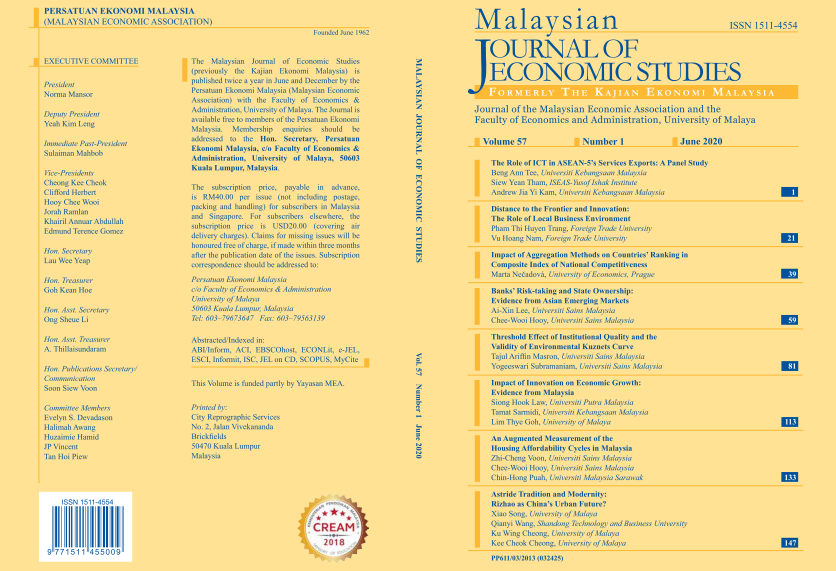Impact of Aggregation Methods on Countries’ Ranking in Composite Index of National Competitiveness
DOI:
https://doi.org/10.22452/MJES.vol57no1.3Keywords:
Aggregation methods, composite indicator, Global Competitiveness Index, Global Competitiveness Report, national competitivenessAbstract
The Global Competitiveness Index (GCI), the composite indicator of national competitiveness discussed in this paper, is widely accepted by policymakers and other authorities for its ability to integrate a significant amount of relevant information about competitive advantages and disadvantages of countries on different levels of development. The explanatory power of this international ranking depends strongly on the choices made during the process of construction of the composite index (CI). Being inspired by the newly proposed WEF’s attitude (the methodology of the GCI 4.0 based on the same weights for the pillars) we used the arithmetic and geometric mean on different levels of aggregation – on the level of the twelve pillars and the level of the three sub-indices (basic requirements, efficiency enhancers, innovation and sophisticated factors). This attitude enables us to reduce the methodological problem of compensability among the pillars and sub-indices. This paper explains the differences caused by the abovementioned methodological changes. Our analysis is concentrated on changes in the competitive position of three Asian countries – Vietnam, South Korea and Japan – caused by using different aggregation methods.

